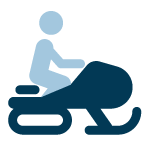Research + Development
At BioLogic Forensics, we do more than just put the pieces back together. With so much experience with the aftermath, why not do everything we can to better understand the before and during?
Whether performing independent research or in collaboration with others, we offer a unique perspective to any project. Our skill set is distinct in that it combines expertise in the areas of biomechanics and mechanical engineering with experience in both the laboratory and the courtroom. Being in Hawaii, we have access to some of the most extreme activities and environments in the world.
The following are just a few of the projects we have been involved in over the years or are currently working on:

You don’t need to surf to appreciate it’s wonder and awe. We are talking about a collaboration between humans and equipment with the intention of harnessing the power and energy of the sea. Board designs have evolved and conditions can be predicted, but what do we know about what the surfers are subjecting themselves to?
Anecdotal evidence isn’t enough, we need science and hard facts. We are very proud to be a part of this growing area of research. Here are a couple short articles we’ve authored that discuss some surfing from a Biomechanist’s perspective:
Talk Story Blog – Science + Surfing
Stay tuned for some new and exciting surfing related projects that are currently in the works…

We come across some very unique cases in this line of work. Many of these are rare events so there is limited if any research to rely upon. In these situations, we get to do some research and testing of our own. The following is an example of one such case:
I used to work in Canada, so snowmobile cases were somewhat common. A few years ago, I had a case involving an operator that struck a stationary object. The operator was ejected and the unmanned snowmobile came to rest some distance further.
Police used deceleration rates to establish the impact speed of the snowmobile. Unfortunately, the data they used was based on testing of occupied snowmobiles, and thus did not account for the potential difference between a manned and an unmanned (i.e. post-ejection) snowmobile. The reality was that no such data existed at the time. So, like any good scientists, we set out to answer this question.
After thoughtful planning and careful design, my colleague and I traveled to the site of the incident and carried out testing that was safe, accurate, and scientifically reliable. In short, there were differences between the manned and unmanned deceleration rates. Not only were our questions answered, but the data was novel and valuable enough to warrant greater distribution. Our study was presented at the 19th Canadian Multidisciplinary Road Safety Conference in June of 2009.
Click here to download paper on Snowmobile Deceleration Rate
Check back later for more case studies…

As a student at Michigan State University I was able to study under and collaborate with world-renowned specialists in the fields of Biomechanics, Mechanical Engineering, and Orthopaedics. One such mentor was Dr. Loïc Dejardin, Head of Orthopaedic Surgery at MSU’s College of Veterinary Medicine. My work with Dr. Dejardin formed the bulk of my graduate thesis, which can be partially reviewed and/or purchased here!
Of the many projects we collaborated on, one was particularly ambitious in that we aimed to develop a novel interlocking nail (ILN). ILNs are used to treat comminuted fractures in long bones. The designs that were available at the time were problematic for reasons that were discussed in the numerous publications that arose from this work and in my graduate thesis.
From the research to the design and testing, this process gave me a chance to apply everything I had learned in the classroom. Theory based calculations, coding, CAD design, non-destructive evaluation, biomaterials, biomechanical design, and so on. The experience was invaluable and inspiring in more ways than one.
Unfortunately, the outside world was beckoning and I chose to finish up grad school before the in-vivo studies had been completed. Nevertheless, the little nail that could, the one I first saw as a rough sketch on a piece of paper, was eventually introduced to the market by BioMedtrix, a company that specializes in veterinary Orthopaedic implants.

We are always learning, asking questions, and looking to expand our body of research.
Got a project in mind? Need data from Hawaii?